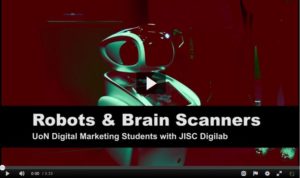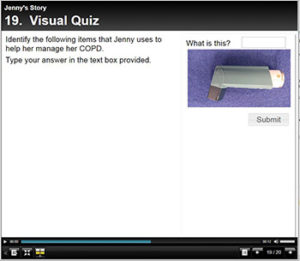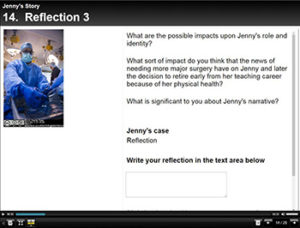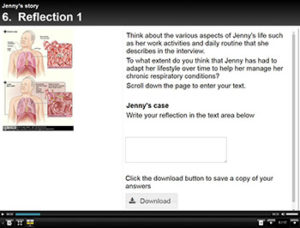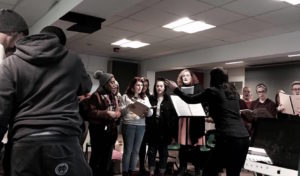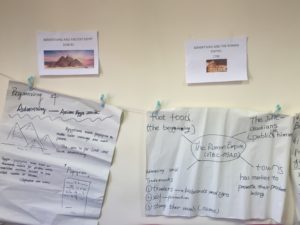Guest post written by Jim Lusted.
“Our classrooms are changing – and I don’t mean the posh new room designs and furniture at Waterside campus. Since I started teaching at Northampton in 2009 the students I have taught have become increasingly diverse in their ethnic background. I’ve gone from having only a small handful of Black, Asian and minority ethnic (BAME) students to now regularly teaching classes with an even split of people from white and BAME backgrounds. It’s not just in my own department, Northampton has seen a significant increase in the intake of BAME students. This isn’t, however, reflective of the sector as a whole, which has seen very little increase in ethnic diversity across the whole student intake.”
“…our research recommended that staff make a more concerted effort to create groups that offer students the chance to work with a wide range of students, not only their peer or friendship group.”
Written by Dr. Jim Lusted, Learning Designer/Senior Lecturer in Sport Studies
In November 2017 I took up an 8 month secondment as a Learning Designer (LD) with the Learning Technology team. I had been a Senior Lecturer in Sport Studies at Northampton since 2009 and saw this as a great opportunity to try something new for a while. This blog gives you a flavour of my experience of the LD secondment, what I learned about working in professional services.
Why a Learning Designer secondment?
I was attracted to the secondment for three main reasons. First, I had really enjoyed working with the Learning Technology team as a lecturer and had valued their support – through things like CAIeRO course design workshops, ABL development sessions and helping me solve NILE problems. I felt I could fit quite nicely into their team and would enjoy working with them. Second, I had become more interested in teaching and learning practice – particularly as a result of the University’s shift towards ABL, and felt the secondment would be a great way to develop my own skills and knowledge in this area. Third, in my role as programme leader I had enjoyed mentoring new and less experienced colleagues, so I wanted to see what it would be like supporting staff in a more formal role. I must also admit that after 9 years of working in the same role I also fancied a change of scenery – I was eager to try something new.
“…I learned more about T&L practice in my LD role than I had probably done in my whole teaching career up to that point – I had the head space to think about my practice rather than just be chasing my tail teaching sessions every week.”
In this video Mark Allenby, Senior Lecturer in Social Work, discusses how peer assessments have provided an opportunity for active learning with his first year BA in Social Work students and reflects on why he will be increasingly using peer assessments in his teaching at Waterside.
Mark introduced peer assessments as formative activities within his 17/18 module SWK1049 – Skills for Practice – using the NILE tool Self and Peer Assessments, in order to help scaffold his students’ learning for their forthcoming assessments.
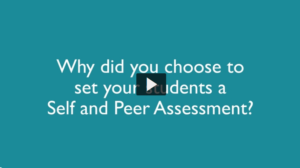
VIDEO – Mark Allenby reflects on NILE Self and Peer Assessments
Working with Learning Technologist Richard Byles, he has been documenting his students’ feedback using the digital post-it tool, Padlet, and by recording video feedback with student Angell O’Callaghan.
The majority of feedback for the activity was very positive, with many wishing to practice further. Students also identified areas where the activity could be improved. Comments included:
“I would like to use this more often throughout my degree.”
“It was very useful and I liked the autonomy. It was helpful to read others’ work.”
“It was good to take other’s interview skills on board and use them myself, helping me better and develop my own interview skills.”
“Scoring as a Yes/No or a 1/2 doesn’t give a lot of scope.”
“The process (of submitting) was somewhat convoluted but this may be due to it being a new activity.”
Mark says that “peer-feedback is a tool that fits perfectly with the move to ABL, as students are collaboratively engaged in evaluating their own progress towards goals that they have chosen for themselves”. In conclusion, he advocates that staff try the tool for themselves in ‘low risk’ formative activities with students and explain to them the benefits of peer assessments.
For more information on using Self and Peer Assessments please read the FAQ – How do I set up a Self and Peer Assessment in NILE? or contact the Learn Technology team: learntech@northampton.ac.uk
Advertising and Digital Marketing students got a glimpse of their professional futures this week when they got to work with a robot, a brain scanner, and a 3D virtual reality paint brush.
Click here to view video – Robots & Brain Scanners, UoN Digital Marketing Students with JISC Digilab
The group of second years got to try out all this hi-tech kit as part of a competition prize won by one of their lecturers.
Back in November, Senior Lecturer in Marketing Kardi Somerfield was named in the top 10 higher education social media superstars by JISC, an organisation that provides digital services to UK education.
As a reward, Kardi won the visit from their Digi Lab team.
“I was delighted to make the top ten, particularly because my students could benefit from this prize. It’s been great to have JISC and Digi Lab here, along with all this cool tech to experience.”
Over the course of a morning, the students had a chance to programme the robot for themselves – and for marketing students that meant imagining it working in places like a restaurant, hotel, or shopping mall.
Kardi said: “It was helpful to see some of the technology first hand, and with the robot it was far easier to imagine it in a service or marketing environment when you could see first-hand how people interacted with it.”
The 30 strong group also got to try out the Emotiv brain scanner – a wireless EEG headset that records brainwaves and overlays the pattern of electrical activity onto an image of a brain.

Image: Emotive brain activity data
“It detects responses such as interest, focus, and stress, so it’s perfect for testing how effective an advertising campaign might perform, or what consumers really feel about a product,” said Kardi.
Verity Nalley, from JISC Digi Lab team said: “The marketing students came up with a load of amazing ideas for how it could be used in promotional campaigns.”
Digital Marketing Student Karima Iredale had the idea of creating an app that would connect with wearable tech like the Apple Watch or the Fitbit that would give the user information on how focused or stressed they were.
“So it wasn’t just about the body activity but the brain fitness as well,” she said.
Her classmate Raluca Sandu agreed it was a great experience.
“It is much easier for us to now consider it as an option when we are in the position to develop a campaign or talk about viral marketing for a real job.”
The final bit of kit in the prize was a Google Tilt brush – which is conjunction with a VR headset, allows users to ‘paint’ both large and in 3D.
Summing up the benefit of the day, Kardi said the most important thing was to create an environment where students can share.
“We can train them in one particular technique today, but in a year’s time, or two years’ time, it will be something else – so it’s more important to build the capacity to embrace the new technology and keep learning, and acquiring, and deciding which things work for you. I think that’s where things like today can help as it might just be that sometimes you need to have things put in front of you to give you that opportunity to explore.”
Article: Published in Unify 18 Jan 2018 | Video: Learning Technology 2017
The journey and the reflections
I was privileged to be invited to co-present with Liz Sear, Senior Lecturer, Foundation Degree in Health and Social Care, at the service user and carers forum on January 10th 2017 by Sara Simons, Senior Lecturer/Disability Co-ordinator Faculty of Health and Society.
Liz and I had previously developed an e-learning package following the story of ‘Fred’, a fictitious character. ‘Fred’ is a homeless man whose journey to hopeful recovery exposed service provider and healthcare involvement. This online case study supported students’ understanding of inter-professional and multi-agency working.
Satisfying the need to present complex information in a clear and understandable way to Health and Social Care students, we demonstrated how effective this online learning had been.
There is nothing better than a ‘real-life’ story for students to learn from, and with this in mind, we invited service users to get involved by sharing their story with us and give us their permission for their story to be told in online e-learning packages for students to access for their studies here at the University.
A service user put herself forward as a willing contributor and subsequent plans were put in place to audio record the service user telling her story. Liz and Anne worked together on storyboarding and building the two e-learning packages using Xerte software.
Sara Simons
Chronic Obstructive Pulmonary Disease (COPD) is the name for a group of lung conditions that cause breathing difficulties including chronic bronchitis, emphysema and chronic obstructive airways disease. People with COPD have trouble breathing in and out, due to long-term damage to the lungs, usually because of smoking. COPD (bronchitis and emphysema), affects an estimated 3 million people in the U.K. (NHS, 2015).
We were interested to learn about the physical and psychological implications upon an individual’s day to day life and levels of activity in living with a long term condition. As co-production is key to developing quality the Health and Social Care (Care Act, 2014), as supported by NUSU 4Pi National Standards, Nothing about Us without Us (2015), involving the service user in all aspects of the production was fundamental to the project.
Jenny was happy to be involved, and following a thorough briefing of what this would entail, Jenny used prepared guidelines of questions to structure her answer. Full written consent was provided by Jenny to record and use her story for student learning purposes. Using a structured interview format, audio recording took place and key props used by Jenny were photographed to support her narrative.
Once the recording was adapted into the story board format Sara acted as a critical friend to the layout, format and directed learning tasks. Once recommendations were adopted, Jenny was asked for her views and opinions and further editing took place. User testing was undertaken by a number of students who piloted the packages.
Liz Sear
In terms of my experience of working on this project I feel that it has left me with an enormous sense of admiration for the service user Jenny in terms of the challenges that she has had to face and overcome in her life, I think that she is very courageous person. It has also been a timely reminder that alongside the theory about the health and social care topics that we teach our students there is always a person whose story is unique and which reminds us that people do not experience ill health in the same way. As practitioners we need reminding of this so that we can strive to see things through the eyes of another person while not making assumptions about who people are, what they need from us and the reasons why they may behave in the way that they do. I feel that to do this successfully we must be prepared to be humble, as practitioners we can never ‘know it all’ and service users will often present us with insights about their experiences that can challenge our beliefs and prompt us to reflect upon our practice on a much deeper level.
Further information
Upon reflection, this has been an effective learning opportunity for all the contributors and we look forward to developing further packages this year.
Special thanks go to Jenny, who commented upon the fact, that this had been a really positive and rewarding experience.
Anne Misselbrook, Liz Sear and Sara Simons
Student Feedback
“I found this package very engaging and informative”.
“Found the package very interesting and emotional to find out how much Jenny had been through in her life”.
By Dr. Jasmine Shadrack, Senior Lecturer in Popular Music, FAST
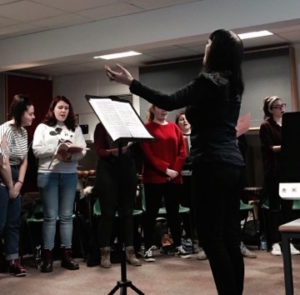 As this year’s choir have been asked to perform at the opening ceremony of Waterside, as well as our own performance at the Royal next June, it was important to choose a piece of music that had the wow factor. And for me, that has to be Mozart’s Requiem Mass in D Minor. It was the first piece I ever conducted so I have very fond memories of it. I have also performed it myself as a soprano during my undergraduate degree so my knowledge of it is intimate. The fact that Mozart knew he was dying when he wrote it, makes the piece all the more poignant and special.
As this year’s choir have been asked to perform at the opening ceremony of Waterside, as well as our own performance at the Royal next June, it was important to choose a piece of music that had the wow factor. And for me, that has to be Mozart’s Requiem Mass in D Minor. It was the first piece I ever conducted so I have very fond memories of it. I have also performed it myself as a soprano during my undergraduate degree so my knowledge of it is intimate. The fact that Mozart knew he was dying when he wrote it, makes the piece all the more poignant and special.
The music for it will take a longer time to come together but the choir are making great strides already. We have completed (in the most part!) the Aeternam and the Kyrie Eleison (the first two movements) as well as learning some traditional Christmas carols too (for a lunch time concert later in the term). This time I am joined by a new member of staff, Miss Francesca Stevens who does a two hour vocal training session a week to support what I do every Monday in choir rehearsal. Already I have noticed the bond starting to form, not just between each section of the choir, but as a unit too. One of the things I love most about doing this is watching everyone work together for a common goal. It is active blended learning at every stage, from the rehearsals all the way through to the performance. Not only do they learn close score reading, sight reading , close part harmony, how counterpoint functions, effective breathing techniques, good pronunciation, professional conduct and critical listening, they also forge real solidarity as a cohort that spans across all years of the popular music undergraduate degree.
They are able to exercise their own autonomy by using their voice. This might sound simplistic but it really helps to acknowledge that one voice can have a huge impact on a choir. Through their subjective involvement, they take part and contribute to an objective goal so it is experiential. They also gain empowerment through their learning community. As the choir is voluntary, it means that they are there because they want to be and they are not doing it for assessment purposes. I have tried making it assessable previously and it just didn’t work; it actually undermined all the camaraderie and fun we have with it. There is a real sense of inclusivity too that reflects on their personal responsibility to the choir.
So, at week three of the choir in term 1, we are making great progress and having fun at the same time!
Jasmine will be keeping us up to date with the progress of the choir, but this post is also one in a series of ABL Practitioner Stories, published in the countdown to Waterside. If you’d like us to feature your work, get in touch: LD@northampton.ac.uk
By Nick Cartwright, Senior Lecturer in Law, FBL
I was at a meeting of people involved in various ways in staff development of lecturers and as we as an institution had adopted Active Blended Learning (ABL) as the ‘new normal’ I found myself asking in our break-out group: “ABL WTF?” The response was roughly along the lines of “it’s what you do Nick” and several conversations later I was invited to write this blog post about what I do in the classroom and why.
Firstly, one of the most important answers to the why I teach the way I do is because I enjoy doing it this way and it works well for me and what I teach. I certainly don’t think it’s better than other approaches and I don’t know if it would work for every tutor or every subject.
So, I know what works for me now but it was a long journey. I started teaching the way I was taught within the straight-jacket of institutional policy where I then worked, we had a lecture then a seminar every week for ever every module. The lecture was recorded on VHS tapes and stored in the library, the technology meant I had to use PowerPoint and stand stock still behind the lectern. The hour-long seminars I inherited required that in week 1 we asked the students to read chapter 1 of the assigned text, week 2 was chapter 2 and so on. Students were instructed to answer roughly 10 questions and bring hard copies of their answers. I ran a tight ship, students who turned up unprepared were told to leave – my classroom was an exclusive space for the students that were the easiest to teach. We had roughly 5 minutes on each question then left, job done.
Later in my career, at a different institution, I sat in a staff meeting listening to colleagues report that the foundation students had “gone feral” – a chair had been thrown, a lecturer threatened and they simply would not sit down in two straight rows, shut up and listen as wisdom was dispensed. Of course they wouldn’t, despite being bright and capable and having gone through 13 years of formal education they were in the foundation year because they hadn’t achieved the two D’s necessary to enter straight onto the degree programme. Bored with PowerPoint I found myself eagerly volunteering with a colleague to take on these students who we were to later find out were some of the brightest, most enthusiastic students we’d ever had the pleasure of teaching.
 One student in feedback tagged our efforts ‘sneaky teaching’ because without realising it they were learning, we tagged it ‘learning by doing’ and at validation the external panel members commended it. In one module the students formed political parties and competed to be elected, in another they witnessed a train wreck and were the lawyers trying to support the victims, at the end arguing before the European Court of Human Rights that one client had the right to die. We didn’t tell them anything, clients sent letters, senior partners sent emails and we patiently waited for them to ask us to direct them to a source or take through a topic area. That we learn best by doing is nothing new, the Ancient Greek philosophers key principle was that dialogue generates ideas from the learner: “Education is not a cramming in, but a drawing out”1. I came to Northampton burning with a passion to get my students learning by doing because it works and because it engages many students who have been excluded by traditional schooling.
One student in feedback tagged our efforts ‘sneaky teaching’ because without realising it they were learning, we tagged it ‘learning by doing’ and at validation the external panel members commended it. In one module the students formed political parties and competed to be elected, in another they witnessed a train wreck and were the lawyers trying to support the victims, at the end arguing before the European Court of Human Rights that one client had the right to die. We didn’t tell them anything, clients sent letters, senior partners sent emails and we patiently waited for them to ask us to direct them to a source or take through a topic area. That we learn best by doing is nothing new, the Ancient Greek philosophers key principle was that dialogue generates ideas from the learner: “Education is not a cramming in, but a drawing out”1. I came to Northampton burning with a passion to get my students learning by doing because it works and because it engages many students who have been excluded by traditional schooling.
I had started out teaching some more practical topic areas so the ‘doing’ was quite easy to work out but last week I found myself in a first-year workshop dealing with the issues of the nature of law and specifically feminist and queer theory approaches. It was when discussing how that had gone that I was asked to write down how I had done it.
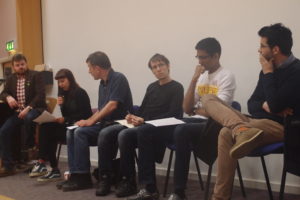 The session needed to get the students to grasp that there are different critical voices within (and outside of) feminism and to get to grips with the skill of applying different perspectives to the law – what they applied the law to was less important. The workshop was two hours long and there were three questions to discuss, we ran out of time in every session and every session was completely different. I could have worried about equality of learner experience, ensuring every student in every session got an identical set of correct notes, and in my younger days I would have done, but my students did get equality of learner experience. They got to choose the lenses through which we discussed the issues, for example one group focused on issues of consent and sexual touching in a social setting, another on the lack of diversity in the judiciary and another on whether the dominant narratives around immigration were racist. It was relevant to all of them rather than just those who related to the lens I would have chosen which would likely be white, male and straight.
The session needed to get the students to grasp that there are different critical voices within (and outside of) feminism and to get to grips with the skill of applying different perspectives to the law – what they applied the law to was less important. The workshop was two hours long and there were three questions to discuss, we ran out of time in every session and every session was completely different. I could have worried about equality of learner experience, ensuring every student in every session got an identical set of correct notes, and in my younger days I would have done, but my students did get equality of learner experience. They got to choose the lenses through which we discussed the issues, for example one group focused on issues of consent and sexual touching in a social setting, another on the lack of diversity in the judiciary and another on whether the dominant narratives around immigration were racist. It was relevant to all of them rather than just those who related to the lens I would have chosen which would likely be white, male and straight.
The biggest challenge is letting go and empowering students to find their own way through the issues, generating authentic knowledge which may be different from or even challenge my knowledge. Practically it also involves what I dubbed in chats ‘double thinking’, keeping two chains of thought going at once. One half of my brain is following the students journey, sometimes disappearing down the rabbit hole, whilst the other is focused on what we need to cover and trying to keep an overview of the topic all the time working out what questions I need to throw out to keep the two tracks running in the same direction – if I lose the latter the session suddenly loses any sense of direction and this disengages my students. It’s more challenging and more tiring than how I used to teach, but I believe it is a better, more inclusive experience for my students. I wonder what I’ll be doing 10 years from now and how critical I’ll be of what I do today?
1Clark, D., ‘Socrates: Method Man’ Plan B [online] http://donaldclarkplanb.blogspot.co.uk/search?q=Socrates [accessed 4 October 2013 @ 14:37]
This post is one in a series of ABL Practitioner Stories, published in the countdown to Waterside. If you’d like us to feature your work, get in touch: LD@northampton.ac.uk
Melanie Cole, Lecturer in Practice (midwifery) and Alison Power, Senior Lecturer (Midwifery) wrote an article for the British Journal of Midwifery (BJM).
The article entitled ‘Active Blended Learning for clinical skills acquisition: innovation to meet professional expectations’, explains how ABL can satisfy the standards for pre-registration midwifery education.
The article is published in the BJM in October 2017, Vol 25, No 10. Please read this interesting article found by clicking on the link below, and find out how innovative approaches to teaching and learning strategies within the curriculum can foster decision-making skills.
Active Blended Learning for clinical skills acquisition, Power and Cole (2017)
This video from Dr Rachel Maunder, Associate Professor in Psychology, provides some examples of active, blended learning approaches that Rachel has tried in her modules so far. Rachel shares two different models, one which focuses on linking classroom activity to independent study tasks online, and one which includes some teaching in the online environment in addition to face to face sessions. Rachel also shares useful lessons she has learned from her experiences so far.
If you have questions about either of these approaches, Rachel is happy to take these via email.
This post is one in a series of ABL Practitioner Stories, published in the countdown to Waterside. If you’d like us to feature your work, get in touch: LD@northampton.ac.uk
By Samantha Read, Lecturer in Marketing, FBL
Taking an active blended learning approach to the delivery of my Advertising module for the BA Marketing Management Top-Up programme has enabled me to enhance traditional ways of teaching the subject material for students to make constructive links between areas of learning and engage with theory in a fun and collective way.
Traditionally, I presented the students with a lecture-style presentation of the history of advertising, drawing on examples from the past and present to illustrate how advertising practices have changed over time. The subject material by its very nature is fascinating, from uncovering secrets behind Egyptian hieroglyphics to discussing implications of the printing press and debating the impact of the digital environment on advertising. Yet, without the ability to transport students back in time, it felt as if they were not fully able to appreciate the momentous changes that have taken place within advertising over the years.
To support the students in learning about the history of advertising this academic year, taking an active blended learning approach, I used a jigsaw classroom technique to facilitate a whole class timeline activity. Before the session, all students were asked to bring in their own device. Following an initial introduction in to the importance of reflecting on the development of advertising over time, I divided the class into seven groups of three or four students. Each group was then given just one piece of the timeline and had 30 minutes to research the implications of that section of history on advertising practice. This included ‘Advertising and Ancient Egypt’, ‘Advertising and the Roman Empire’, ‘The Printing Press was invented’, ‘The development of Billboards’, ‘Radio was invented’, ‘Television was invented’ and ‘The internet was invented’. Students were then given some suggestions of reliable sources where they could go online to research their given time frame and the importance of using these sources and referencing them was stressed.
Whilst the students worked together in their groups to research and construct a one-page A3 poster on flipchart paper outlining their key findings, I circulated the room to check understanding of the research process and the content. This was particularly important as the majority of the students in the class are international students and unfamiliar with UK advertising practices or some terms that they were coming across. I was also able to check the students’ enjoyment of the task and to ensure that everyone in the group was happy to get involved. In contrast to a large lecture style format, the ABL workshop centred on each individual and their specific progression throughout the workshop session.
Upon completion of their A3 poster, each group was instructed to peg their work to the washing line timeline I had attached to the back wall by fitting their time frame within the correct historical period. This ‘active’ jigsaw part of the session not only served a purpose to physically place each time period within its context, but also kept the students engaged in a whole class activity; the success of the timeline ultimately rested with all groups contributing. Once all of the assigned time slots were attached to the washing line, each group selected a member of their group to come to the back of the class to explain their key research findings in relation to the significance of their given time period to the development of advertising throughout history. Having a physical timeline to work with helped sustain the students’ interest in the task and the students themselves were able to make links between each other’s posters, adding to their own and others’ knowledge and understanding.
To ‘blend’ this session to the online environment and subsequently in to the next week’s workshop focusing on the nature of advertising in society, students were asked to complete a survey on NILE which compared print and TV toothpaste advertisements over time. They were also asked to reflect in their online journal on any similarities and differences between the UK based ads included in the survey and those from their home countries. Tutor support and feedback was given on this exercise to ensure that knowledge was accurately embedded and contextualised. Students were also asked to collect three examples of advertisements that they came across over the course of the week as a starting point for a semiotic exercise at the beginning of the next workshop.
Overall, I found the jigsaw classroom technique worked extremely well as part of an ABL approach to teaching the history of advertising. Rather than passively taking in knowledge as I had previously witnessed when delivering this session in the past, there was a real buzz in the classroom. The students were all invested in working together to complete their part of the timeline and were even taking photographs of their completed work. One important aspect of facilitating learning for me is providing opportunities for creativity both in the classroom and online, and taking an ABL approach certainly allows for that.
This post is the first in a new series of ABL Practitioner Stories, published in the countdown to Waterside. If you’d like us to feature your work, get in touch: LD@northampton.ac.uk
Recent Posts
- Blackboard Upgrade – December 2025
- Preparing for your Physiotherapy Apprenticeship Programme (PREP-PAP) by Fiona Barrett and Anna Smith
- Blackboard Upgrade – November 2025
- Fix Your Content Day 2025
- Blackboard Upgrade – October 2025
- Blackboard Upgrade – September 2025
- The potential student benefits of staying engaged with learning and teaching material
- LearnTech Symposium 2025
- Blackboard Upgrade – August 2025
- H5P (HTML5 package) content types meets the needs of Jim Atkinson, Staff Development Trainer
Tags
ABL Practitioner Stories Academic Skills Accessibility Active Blended Learning (ABL) ADE AI Artificial Intelligence Assessment Design Assessment Tools Blackboard Blackboard Learn Blackboard Upgrade Blended Learning Blogs CAIeRO Collaborate Collaboration Distance Learning Feedback FHES Flipped Learning iNorthampton iPad Kaltura Learner Experience MALT Mobile Newsletter NILE NILE Ultra Outside the box Panopto Presentations Quality Reflection SHED Submitting and Grading Electronically (SaGE) Turnitin Ultra Ultra Upgrade Update Updates Video Waterside XerteArchives
Site Admin

